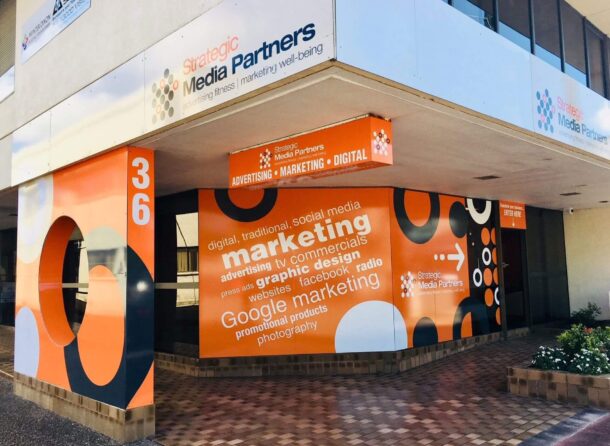
The world of web design evolves quickly, and it can be tough to navigate conflicting and outdated advice. One example of this is the old “3-Click Rule,” which states that users must be able to reach their desired content in three clicks or fewer. However, according to the Nielsen Norman Group, no research supports this rule—it’s more of a myth than a hard fact.
In this post, we’ll explore the essential dos and don’ts of effective web design for 2024 so you can design websites with confidence.
Do: Embrace Established Design Patterns
Design patterns sound technical, but they simply mean using familiar, well-known solutions. Jakob’s Law teaches us that users spend most of their time on other sites, so they’ll understand your site better if it shares common patterns with those sites.
You can’t copy every aspect of popular sites, but you should select design patterns that work best for your audience. Key patterns include placing your logo in the top left corner, underlining links, and putting key information like contact details or shipping policies in the footer.
Do: Prioritise Inclusive Design
Inclusive design ensures that your website is usable by everyone, regardless of ability or device. This isn’t just a legal issue in many places—it’s also good business. Excluding even a small percentage of potential users can directly impact your bottom line.
Making your site responsive is the first step toward inclusivity. Follow accessibility standards like the Web Content Accessibility Guidelines (WCAG) to ensure a positive experience for all users. Additionally, gather feedback from users and make continuous adjustments based on their needs.
Do: Keep It Simple
As a website designer, you’ve undoubtedly envied some of the more original sites out there. It’s important to remember that many of the most experimental sites are usually targeting other designers. Something that works well on a portfolio site won’t translate well to a local convenience store.
99 times out of 100, the simple choice is the right choice. Most people aren’t interested in an original design. They’re interested in accomplishing a task. The less effort expended to complete the task, the better the experience.
Complexity most often creeps into navigation. Start with a logical structure, and use simple, hierarchical navigation.
Do: Stay Focused on Goals
Every page on your website should have one clear goal, whether it’s promoting a product or gathering leads. Hick’s Law tells us that too many choices slow decision-making, while the Goal-Gradient Effect shows that users are more likely to complete a process when they feel closer to the end.
This means it’s better to limit each page to a single call to action (CTA) to guide users toward the outcome you want.
Do: Keep Your UI Consistent
Consistency is often referred to as the hallmark of quality. It means that you’ve paid attention to details. But consistency isn’t just about giving a good impression. Consistency is also essential for good UX (user experience).
Users learn to navigate your website as they go. They learn your website’s ‘rules’ or the logic as they interact with it. If your UI (user interface) is consistent, they’ll learn the rules faster and feel more confident.
Areas that often fail the consistency test are the corner radius of boxes, the style of links, and the tone of writing.
Don’t: Ignore Aesthetics
Design isn’t all about usability studies and reliance on design patterns. Design should also be beautiful.
Beauty is often seen as shallow and unimportant. However, the Aesthetic-Usability Effect states that a beautiful website is more likely to be seen as usable by customers.
A pretty design is a high-converting design.
To ensure your design is pretty, pay attention to your typography hierarchy, colour scheme, and the symmetry of your layout.
Don’t: Make Users Wait
Fast loading times are more important than ever. Your website should load in under a second and become interactive within two seconds. If it takes any longer, users are likely to leave in search of faster alternatives.
Loading speed isn’t the only factor—users also want quick access to information. Don’t bury important content several layers deep in your site. Make sure key products or services are easily accessible.
Don’t: Use Aggressive Pop-Ups
Pop-ups, especially those asking users to sign up for a newsletter, are one of the quickest ways to frustrate visitors. Let users engage with your content first, then offer a newsletter subscription when they’ve had time to explore your site.
Similarly, avoid using oversized cookie notices. These legal necessities can be presented in a non-intrusive way without blocking the entire screen.
Don’t: Leave Content Until Last
Content is often an afterthought in web design, but it’s crucial for both SEO and customer experience (CX). There are three common mistakes when it comes to website content:
- Unbalanced copy: Don’t write short, vague descriptions for your core products while spending thousands of words on company history.
- Writing for the company, not the customer: Organise your content around what your customers need, not your internal business structure.
- Information overload: Long blocks of text are overwhelming. Instead, present content in short, scannable sections to keep users engaged.
In 2024, high-quality content remains the backbone of successful web design.
“Don’t try to be original…
… Just try to be good.”
That quote is from the titan of twentieth-century design, Paul Rand.
It boils down to this: originality is about you, and quality is about the website. Great designers care more about their output than their reputation.

